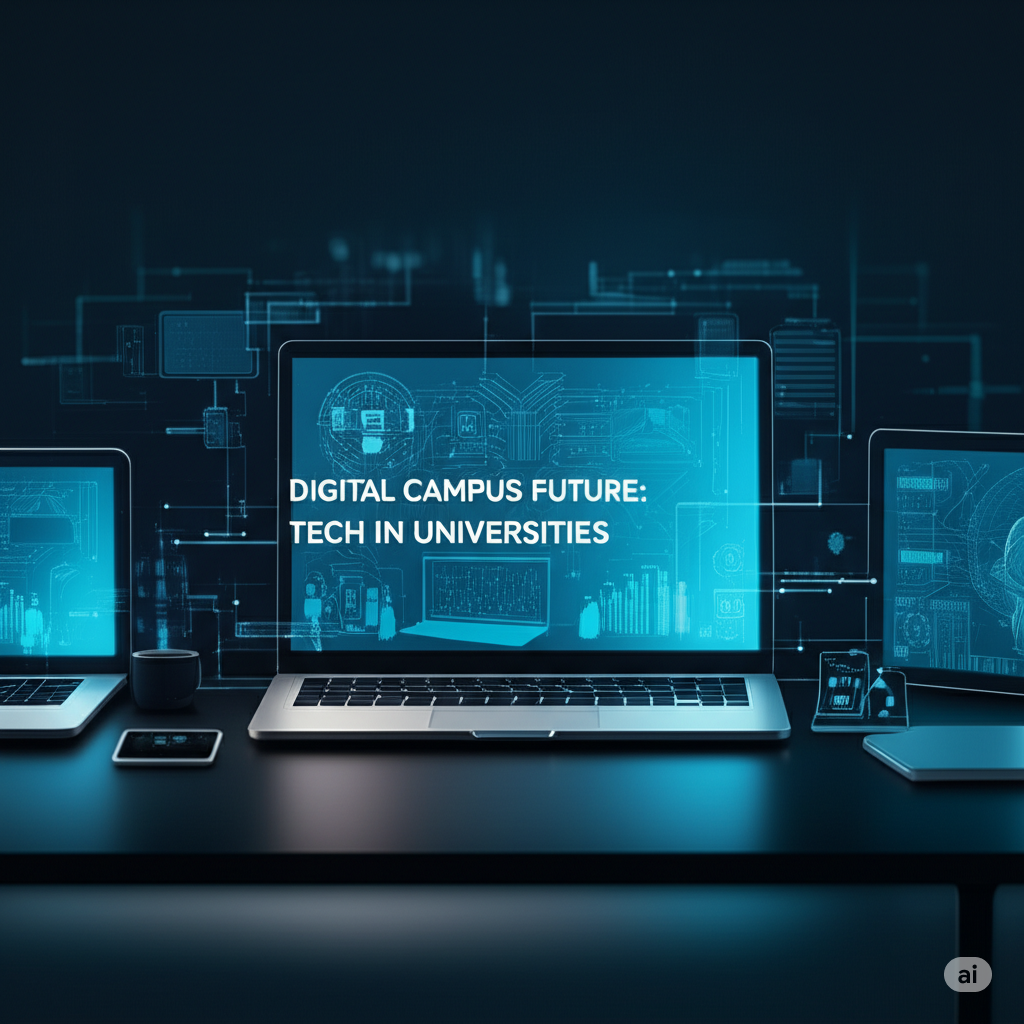
The integration of technology into higher education is no longer an option but a necessity, driving a rapid transformation towards a "Digital Campus Future." This evolution encompasses far more than just online learning; it involves the pervasive adoption of "Tech in Universities" to enhance every aspect of the academic and administrative experience, from teaching and research to campus management and student services. Reflecting research on e-learning and digital resources, this article explores the key components of a digital campus, the benefits and challenges of technology integration, and the potential of technology to reshape the future of higher education.Beyond E-learning: A Comprehensive Digital Ecosystem
While e-learning platforms and online courses have been a significant aspect of technology integration, the vision of a "Digital Campus Future" is much broader. It envisions a comprehensive digital ecosystem where technology is seamlessly woven into the fabric of university life. This includes not only the delivery of education but also research activities, administrative processes, campus management, student engagement, and communication."Tech in Universities" aims to create a more connected, efficient, personalized, and data-driven environment that supports the diverse needs of students, faculty, and staff.
Key Components of a Digital Campus
Research on "E-learning and Digital Resources" and broader technology adoption in universities highlights several key components of a "Digital Campus":- Learning Management Systems (LMS): Platforms that provide a centralized hub for course materials, assignments, grades, and communication between instructors and students.
- Online Learning Platforms: Infrastructure and tools for delivering online courses, conducting virtual classes, and offering blended learning options.
- Digital Libraries and Resources: Access to extensive digital collections of books, journals, databases, and multimedia resources.
- Campus-Wide Wi-Fi and Connectivity: Ubiquitous and reliable internet access throughout the campus.
- Smart Classrooms and Lecture Halls: Classrooms equipped with technology such as interactive whiteboards, projectors, audio-visual systems, and recording capabilities.
- Research Technology: Access to high-performance computing, specialized software, data analytics tools, and virtual research environments.
- Administrative Systems: Digital systems for admissions, registration, student information management, human resources, and finance.
- Student Portals and Mobile Apps: Platforms that provide students with access to academic information, schedules, grades, campus news, and services.
- Data Analytics and AI: Utilizing data analytics and artificial intelligence to personalize learning, identify at-risk students, optimize campus operations, and inform decision-making.
- Cybersecurity Infrastructure: Robust security measures to protect sensitive data and ensure the integrity of digital systems.
Benefits of Tech in Universities
The integration of "Tech in Universities" offers numerous "Benefits":- Enhanced Learning Experience: Technology can make learning more interactive, engaging, and personalized through multimedia content, simulations, and adaptive learning platforms.
- Increased Accessibility and Flexibility: Online learning and digital resources can increase access to education for students who are unable to attend traditional classes or require flexible learning options.
- Improved Efficiency and Productivity: Digital tools can automate administrative tasks, streamline processes, and improve efficiency for faculty and staff.
- Expanded Research Capabilities: Technology provides access to vast datasets, powerful computing resources, and collaborative platforms that enhance research capabilities.
- Personalized Support: Data analytics and AI can be used to identify students who may need additional support and provide personalized interventions.
- Better Communication and Collaboration: Digital platforms facilitate communication and collaboration among students, faculty, and staff.
- Data-Driven Decision-Making: Access to data and analytics can inform decision-making at all levels of the university.
Challenges in Digital Transformation
Despite the benefits, achieving a seamless "Digital Campus Future" faces challenges:- Infrastructure Investment: Implementing and maintaining the necessary technological infrastructure requires significant financial investment.
- Digital Divide: Ensuring equitable access to technology and reliable internet connectivity for all students remains a challenge.
- Faculty Training and Development: Providing adequate training and support for faculty to effectively utilize technology in their teaching and research.
- Cybersecurity Risks: Protecting against cyber threats and ensuring the security and privacy of sensitive data is paramount.
- Resistance to Change: Adopting new technologies and digital workflows can face resistance from individuals who are accustomed to traditional methods.
- Ensuring Digital Literacy: Ensuring that all members of the campus community have the necessary digital literacy skills to effectively use the available technology.
- Sustainability of Technology: Managing the lifecycle of technology, including updates, replacements, and e-waste, presents environmental considerations.
The Future Landscape of Higher Education
"The Future Landscape of Higher Education" will undoubtedly be shaped by the continued integration of "Tech in Universities." As technology becomes more sophisticated and ubiquitous, universities will continue to evolve into increasingly digital environments. This will likely involve a greater emphasis on blended learning models, personalized learning pathways powered by AI, the use of virtual and augmented reality in education and research, and the development of smart campus initiatives that leverage data to optimize operations and enhance the student experience.The "Digital Campus Future" is not just about adopting technology; it's about strategically leveraging technology to create a more accessible, engaging, efficient, and effective higher education system that prepares students for success in a digitally connected world.
In conclusion, a "Digital Campus Future" is rapidly becoming the reality for universities, driven by the increasing integration of "Tech in Universities" to enhance every aspect of the academic and administrative experience. Reflecting research on e-learning and digital resources, this transformation offers numerous benefits, from enhanced learning experiences and increased efficiency to expanded research capabilities. While challenges related to infrastructure, the digital divide, and training exist, strategic investment and a focus on human factors are crucial for successful digital transformation. The future of higher education will be increasingly digital, leveraging technology to create a more accessible, personalized, and effective learning environment that prepares students for the opportunities and challenges of the 21st century.
